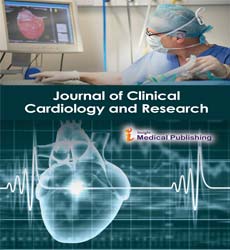Congenital Absence of Pulmonary Valve A Rare Congenital Hearts Defect in Newborns Patients
Abstract
Hypercholesterolemia is most ordinarily, however not solely, outlined as elevated levels of conjugated sterol (LDL-C) or non highdensity lipoprotein sterol (HDL-C); an alternate term is dyslipidemia that encompasses elevated triglycerides, low levels of HDL-C, and qualitative lipide abnormalities. Hypercholesterolemia is a vital risk issue for arterial sclerosis upset, together with neural structure sickness, coronary cardiopathy, and peripheral blood vessel disease; it’s sometimes symptomatically quiescent till vital hardening of the arteries has developed. Complications of hypercholesteremia and hardening of the arteries embody myocardial infarct, ischaemic heart condition, explosive internal organ death, apoplexy, impotence, gameness, and acute limb anaemia. Risk factors for secondary hypercholesteremia in industrialised populations embody a inactive fashion and a diet characterised by the excessive consumption of saturated fats, transfatty acids, and sterol. Different associations embody polygenic disorder, excess weight principally within the abdominal region, adenosis, syndrome, and cholestatic disease. Low HDL-C levels square measure related to smoking and abdominal fat. It is diagnosed by a lipide profile, consisting of measurements of total sterol, LDL-C (estimated or direct), HDL-C, and triglycerides. NonHDL-C is calculated by the subtraction of HDL-C from total sterol.
Open Access Journals
- Aquaculture & Veterinary Science
- Chemistry & Chemical Sciences
- Clinical Sciences
- Engineering
- General Science
- Genetics & Molecular Biology
- Health Care & Nursing
- Immunology & Microbiology
- Materials Science
- Mathematics & Physics
- Medical Sciences
- Neurology & Psychiatry
- Oncology & Cancer Science
- Pharmaceutical Sciences
